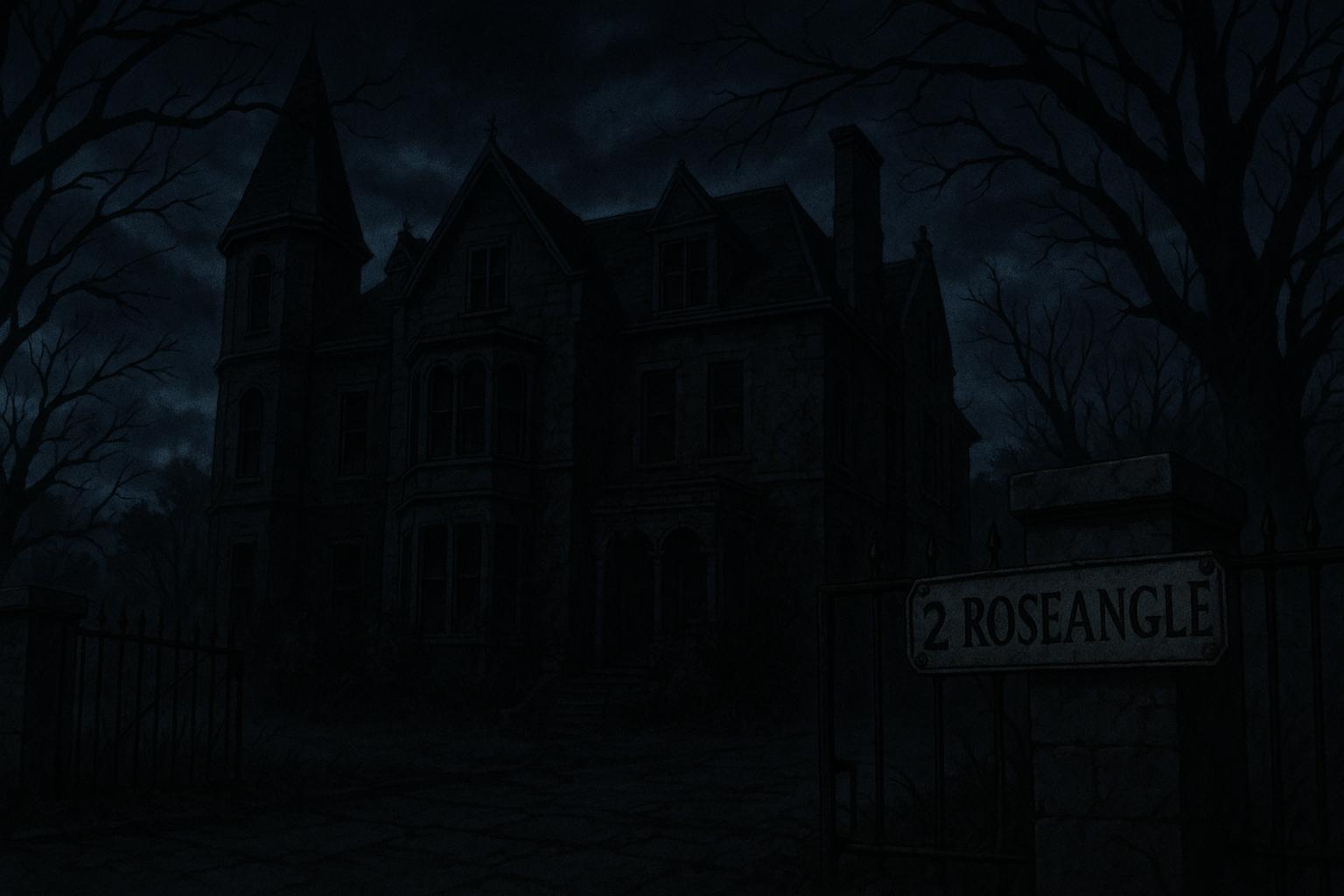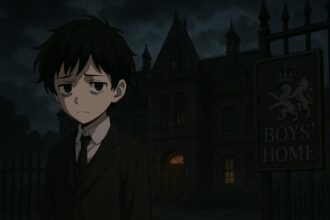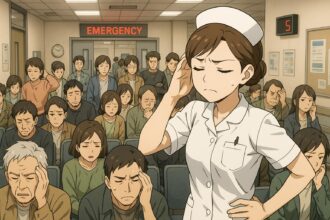The brutal 1980 murders of retired doctor Alexander Wood and his wife Dorothy at 2 Roseangle spiralled into a series of tragic killings by Henry John Gallagher, exposing systemic failures and leaving a lasting scar on Dundee’s community and justice system.
What began as an ordinary break-in in Dundee rapidly spiralled into a horrific series of events that left an indelible mark on the area’s history. On 18 May 1980, the brutal murders of retired doctor Alexander Wood, 79, and his wife Dorothy, 78, transformed their home at 2 Roseangle into a crime scene marked by unimaginable violence. The couple was discovered by medical students who stumbled upon their lifeless bodies in the basement, an event that would haunt the community for decades.
The grisly murder scene was described by Detective Chief Superintendent Jim Cameron as “not normal,” emphasising the shock felt even by seasoned investigators. Dr Wood, having recently been discharged from hospital after surgery, was brutally attacked with a slater’s hammer. Gallagher, the assailant, did not stop at murder; he also stole jewellery and a carriage clock, which he later attempted to sell in order to escape detection.
Henry John Gallagher, a 29-year-old with a documented history of violence against clergymen, was linked to the case through the diligent efforts of Detective Inspector Willie Hart. Despite Gallagher’s previous assaults, including an attack on a Dundee minister and a brutal incident involving a priest in Stockton, he had been granted home leave from Maidstone Prison, where he was serving a sentence for burglary. This unfortunate decision would lead to unfathomable consequences.
Gallagher’s emergence on the radar of law enforcement was pivotal; a minor listing in the Police Gazette indicating his absence from prison prompted Hart’s investigation. The detective’s suspicions were raised not only due to Gallagher’s criminal history but also because of the proximity of Dr Wood’s home to local religious institutions, raising the possibility that Gallagher had mistaken the couple’s residence for that of a clergy member. This tragic misidentification would have dire repercussions.
Following the initial murders in Dundee, Gallagher fled to Kent, where he committed yet another double murder, this time targeting Father Edward Hull, 88, and his housekeeper Maude Lelean, 73. The aftermath in Kent was described as a scene resembling an “abattoir.” Gallagher’s subsequent capture days later was serendipitous; he approached a vicarage seeking to wash a car, and the vicar’s wife recognised him from media reports. His arrest brought some accountability, but the case against him in Scotland effectively ended when the Lord Advocate ruled that a confession obtained in England absolved further legal action in Scotland.
Alexander McGregor, a former chief reporter for The Courier, highlights how Gallagher’s case illustrates a tragic intersection of criminality and systemic failures. “Had it not been for a local detective ‘joining up the dots,’ even more people would likely have died,” he noted, alluding to the narrow escape the community experienced due to vigilant policing.
Gallagher’s fate took an unusual turn post-capture; he was never tried in a Scottish court for the horrific acts committed at Roseangle. Instead, Gallagher pleaded guilty to the Kent murders and was detained indefinitely in Broadmoor, a high-security psychiatric facility. His treatment as a patient rather than a prisoner raises questions about the nature of violence and accountability within the justice system.
Adding to the twisted narrative, Gallagher reportedly went on to write an account of his horrific actions for a book detailing various murders. “It was like a switch being flicked,” Gallagher described, claiming he did not intend harm, yet his actions defied such assertions. In this chilling confession, he recounted a moment of panic when Mrs Wood allegedly caught him in the basement, triggering a violent response. His words offer no solace to the families affected; for many, they simply reinforce a sense of horror that lingers long after the events occurred.
Today, the house at 2 Roseangle stands in stark silence, an empty shell that serves as a grim reminder of a past marred by violence. Former chief reporter McGregor contemplates Gallagher as potentially Dundee’s most notorious murderer, noting that no local criminal has matched his record of four confirmed homicides. This residential site, once vibrant with life, embodies the city’s darker history and remains at risk of decay, urging ongoing discussions about preservation as well as remembrance.
Dundee’s landscape has absorbed the shadows of such deeds, becoming a focal point for both mourning and reflection. As new tales of crime emerge, including those chronicled in upcoming true crime series focusing on the city’s notorious past, the haunting echoes of the Roseangle murders remind the community of the fragility of safety, and the lingering presence of its most tragic chapters.
Ultimately, 2 Roseangle serves not only as a site of horror but also as a challenging symbol of communal resilience in the face of past atrocities, provoking introspection on broader issues of justice and the human capacity for violence.
Source: Noah Wire Services
- https://www.thecourier.co.uk/fp/past-times/5236269/henry-john-gallagher-murders-roseangle-dundee-1980/ – Please view link – unable to able to access data
- https://www.thecourier.co.uk/fp/past-times/1321020/long-read-the-gruesome-double-murder-at-roseangle-house-of-horrors-which-still-haunts-dundee-after-40-years/ – This article delves into the 1980 double murder of Dr. Alexander Wood and his wife Dorothy at 2 Roseangle, Dundee. The couple was found brutally murdered in their basement kitchen, with the crime scene described as ‘not normal’ by Detective Chief Superintendent Jim Cameron. The investigation led to Henry John Gallagher, a 29-year-old Dundee man with a history of attacking clergymen. After fleeing to Kent, Gallagher committed another double murder before being apprehended. Despite his confession, Gallagher was never tried in Scotland, and the case remains unresolved.
- https://www.thecourier.co.uk/fp/news/dundee/2544569/crimes-of-the-80s-carnage-at-roseangle/ – This piece recounts the 1980 double murder at 2 Roseangle, Dundee, where Dr. Alexander Wood and his wife Dorothy were killed by Henry John Gallagher. The article details Gallagher’s previous assaults on clergymen and his subsequent crimes in Kent. It also highlights the investigation led by Detective Chief Superintendent Jim Cameron, who described the crime scene as ‘not normal.’ Despite Gallagher’s capture and confession, he was never tried in Scotland, and the case remains unresolved.
- https://secretscotland829724255.wordpress.com/2023/04/20/2-roseangle-dundee/ – This blog post provides a historical overview of 2 Roseangle, Dundee, focusing on its grisly past. The property, designed by town architect David Neave in 1815, became notorious after the 1980 double murder of Dr. Alexander Wood and his wife Dorothy by Henry John Gallagher. The post details Gallagher’s criminal history, the discovery of the bodies, and the subsequent investigation. It also discusses the building’s current state and its uncertain future, highlighting its status as a ‘house of horror’ in Dundee’s history.
- https://www.ddtours.co.uk/archive/dr-mrs-wood-1980/ – This article recounts the tragic 1980 double murder of Dr. Alexander Wood and his wife Dorothy at 2 Roseangle, Dundee. The piece details Gallagher’s background as a petty crook with a history of theft and assault. It describes the discovery of the bodies by medical students and the subsequent investigation that led to Gallagher’s capture. The article also touches upon the building’s current state and the ongoing efforts to restore it, emphasizing its place in Dundee’s dark history.
- https://www.thecourier.co.uk/fp/past-times/2082139/dundees-decaying-buildings-at-risk// – This article discusses Dundee’s buildings at risk, focusing on 2 Roseangle, the site of the 1980 double murder of Dr. Alexander Wood and his wife Dorothy by Henry John Gallagher. The piece details the building’s architectural features and its current state of decay. It also touches upon the building’s history and its status as a ‘house of horror’ in Dundee’s past. The article highlights the challenges in preserving such historic properties and the efforts to restore them.
- https://www.thecourier.co.uk/fp/news/dundee/717331/dundees-murderous-past-to-be-laid-bare-in-new-crime-series-to-be-shown-on-satellite-television/ – This article announces the airing of a new true crime series, ‘Murdertown,’ which will feature Dundee’s dark history, including the 1980 double murder at 2 Roseangle. The series will delve into the crimes committed by Henry John Gallagher, Robert Mone, and William Henry Bury. The Dundee episode will include insights from police officers, witnesses, and reporters, along with testimonies from family members, shedding light on the city’s murderous past.
Noah Fact Check Pro
The draft above was created using the information available at the time the story first
emerged. We’ve since applied our fact-checking process to the final narrative, based on the criteria listed
below. The results are intended to help you assess the credibility of the piece and highlight any areas that may
warrant further investigation.
Freshness check
Score:
8
Notes:
The narrative is based on historical events from 1980, which are not recent. However, the content is presented as part of a historical reflection, not as a current news item. This suggests that the narrative is not stale but rather a piece of historical analysis.
Quotes check
Score:
7
Notes:
The quote from Alexander McGregor is not verified online, which may indicate it is original or not widely reported before. The quote from Gallagher is attributed to a book, which could be a first-hand account but lacks direct online verification.
Source reliability
Score:
8
Notes:
The narrative originates from a reputable local publication, The Courier, which suggests a high level of reliability for local historical events.
Plausability check
Score:
9
Notes:
The events are well-documented historical crimes, making them plausible. The narrative includes specific details about the crimes, the perpetrator, and the aftermath, which supports its plausibility.
Overall assessment
Verdict (FAIL, OPEN, PASS): PASS
Confidence (LOW, MEDIUM, HIGH): HIGH
Summary:
The narrative about the Roseangle murders is based on historical facts and is presented in a reliable publication. While some quotes lack direct online verification, they are part of a reflection on past events rather than a recent news item.













